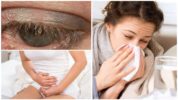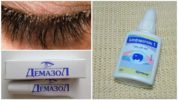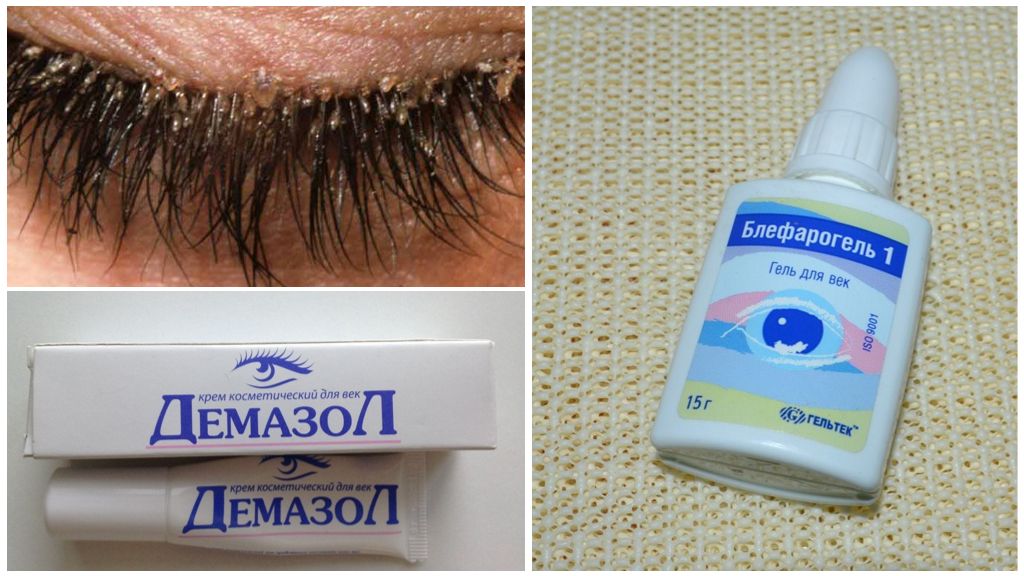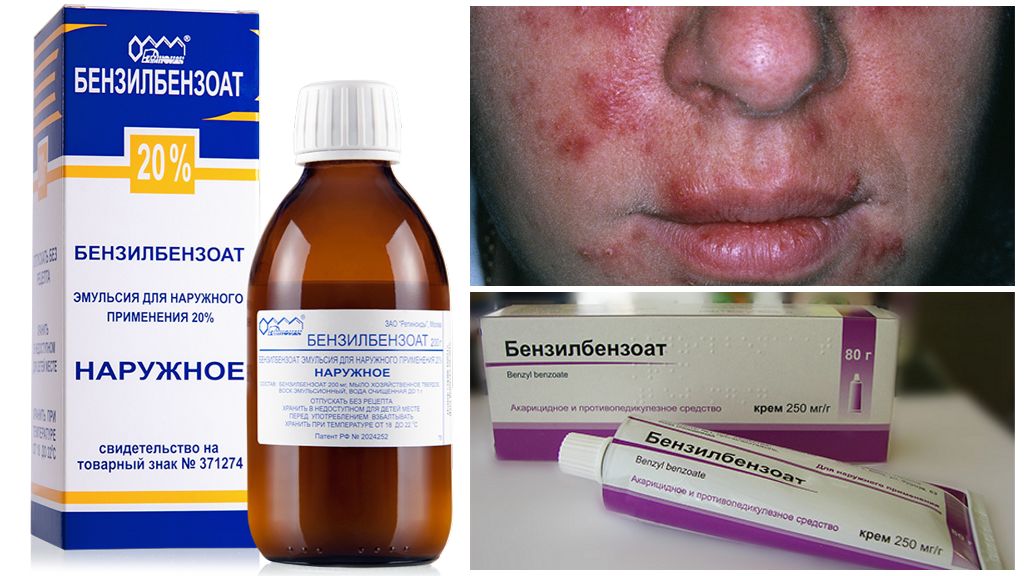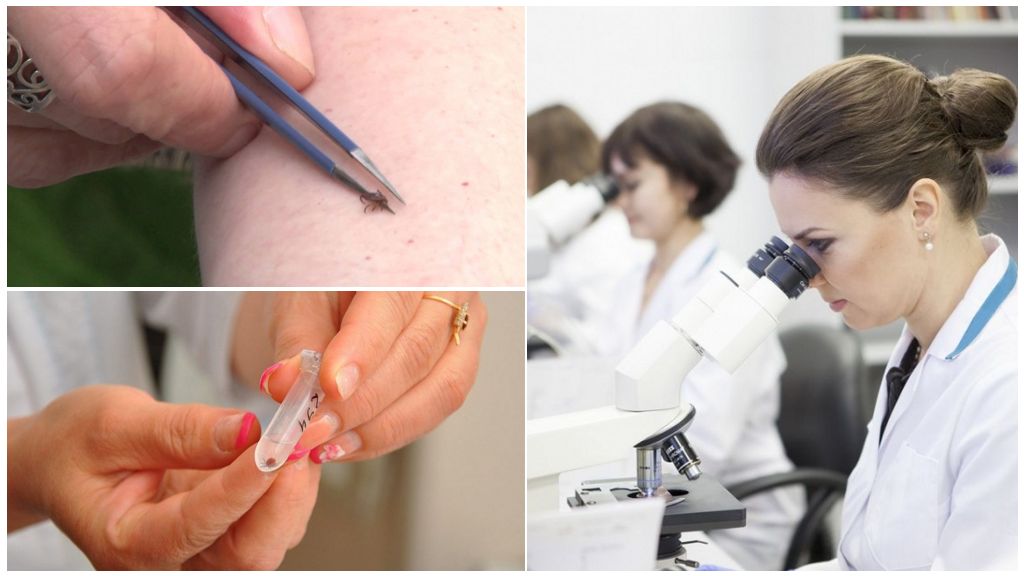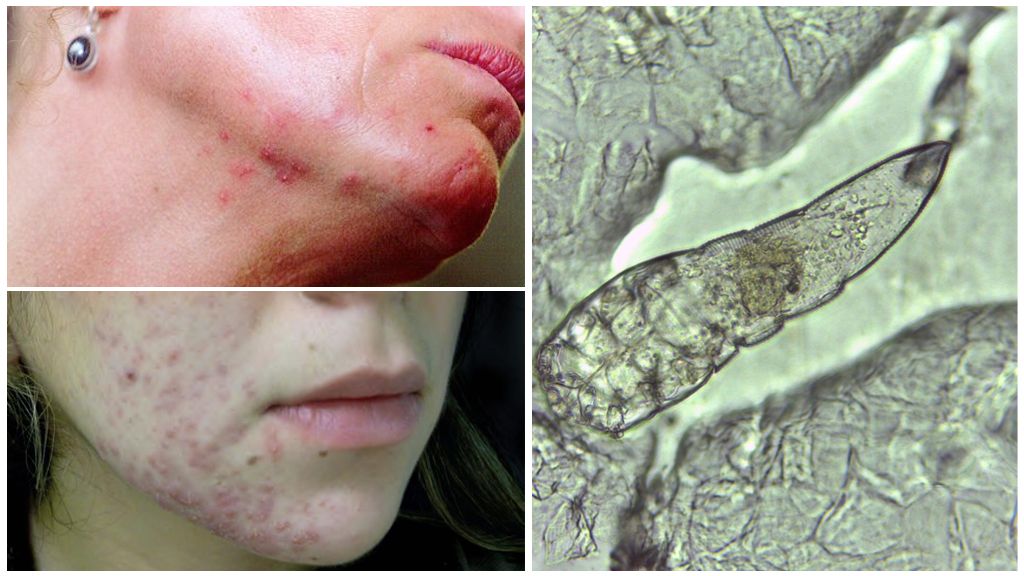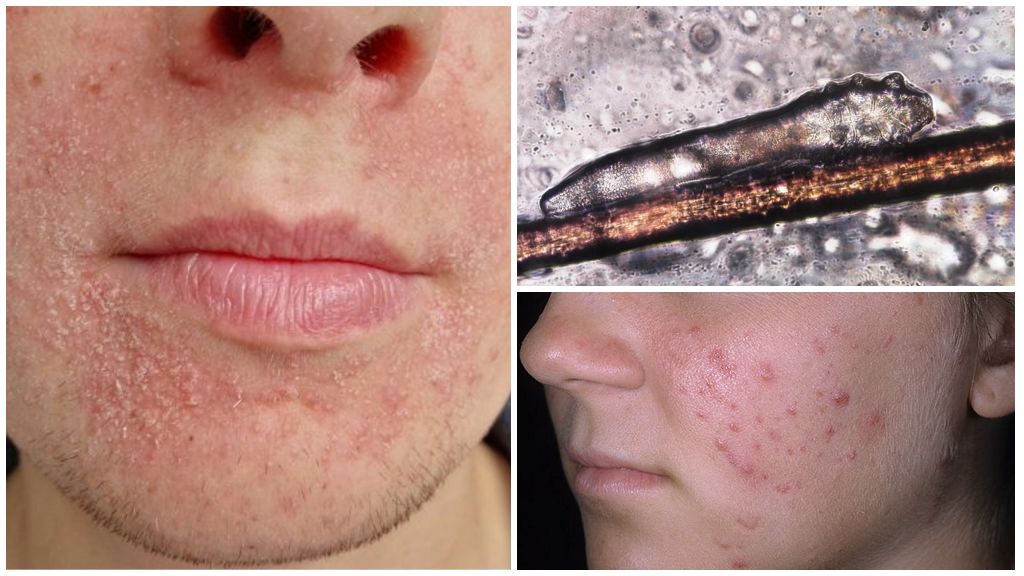- Causes of the development of ciliary mite reproduction
- Ciliary mite treatment
- Ointments for the treatment of ciliary mite
- Folk recipes against ciliary mite
Ciliary mite or demodex is a microscopic pest that is a companion of the human body. Demodecosis can cause the disease only with a negative effect (stress, hypothermia, etc.).
Description of the ciliary mite and its reproduction
Demodexes belong to small arachnids, the size of which is not more than 0.2-0.5 mm. Their lifestyle completely passes in the sebaceous and sweat glands of the human body (see photo of the ciliary mite), i.e., demodexes are human symbionts. These creatures can be permanent inhabitants of the skin without causing any harm, i.e., they are in a neutral or conditionally pathogenic form of their development. Demodex's favorite habitat is the human eyelids and eyelashes.
In unfavorable circumstances for a person (deterioration of immunity, hypothermia, changes in hormone levels, etc.), intermuscular mites become pathogenic and begin to multiply, which causes an unpleasant disease - demodecosis.
Female ciliary mites during the breeding period lay eggs directly in the hair follicles near the eyes. After 60 hours, larvae hatch from them, which still cannot even move, but can only feed for 40 hours and grow. Their next stage is the transformation into a nymph that lives exclusively on hair follicles.
On a note!
The main diet of the demodex tick on the eyelashes at all stages of development is dead epidermal cells and sebum (therefore, parasites often choose people with oily skin), which is not at all dangerous for humans. However, the vital products of ciliary mites, which appear in large quantities during the mass reproduction of parasites, often become strong allergens that provoke a negative reaction of the human body.
Causes and symptoms of demodicosis
The cause of the development of the disease and the reproduction of ticks in the eyelashes can become favorable conditions that are created with some diseases in humans:
- gastrointestinal diseases;
- hormonal disruption or disorder;
- infectious diseases;
- decreased immunity;
- stressful situation;
- the development of a chronic infection (gastritis, sinusitis, pharyngitis, etc.);
- climate change, elevated air temperature and humidity.

Ways of transmission of ciliary mites:
- when visiting public places with high humidity (baths and saunas);
- use of other people's cosmetics and hygiene items (towels, bed), unsterilized tools in beauty salons;
- contact with a sick person or animal.
On a note!
The maximum period of demodex activity is spring and autumn. Demodecosis can occur on the eyebrows, chin, ears and nasolabial folds.
The main symptoms of ciliary mite:
- chronic eye fatigue, photophobia;
- itching and swelling in the eyelids and eyelashes;
- redness and inflammation of the eyelids, passing along the line of growth of human eyelashes;
- various cosmetic (using cream, etc.) and water procedures (washing) cause an irritating effect;
- mucus is released from the eyes and turns into yellow crusts, due to which the eyelashes stick together and fall off;
- vision impairment occurs.
In the presence of the listed symptoms, it is better not to postpone the treatment - you should immediately contact a dermatologist and an ophthalmologist who can do a laboratory analysis of scraping taken from the eyelashes for the presence of ciliary parasites.
Diagnosis and treatment
Diagnosis confirmation are the results. demodecosis testsin which the presence of more than 3 parasites on each eyelash of the patient is detected.
When identifying the first signs of settled ticks on the eyelashes of a person, it is necessary to take urgent measures to maintain personal hygiene so as not to spread the pests to the immediate environment (family and friends).
Important!
Treatment of ciliary mite is carried out only with the use of drugs, this disease does not pass on its own! Moreover, the healing process can take several years - it depends on the degree of damage, chronic concomitant diseases and skin type.

In a comprehensive demodicosis therapy 3 main factors enter:
- adherence to a diet, which should include fermented milk products, vegetables and fruits, dishes with a lot of fiber (cereal), vitamin and mineral complexes; should abandon fatty, spicy and salty foods, coffee, chocolate and sweets, citrus fruits, etc .;
- personal hygiene (separate towels and linen that should be washed regularly in hot water and ironed with a hot iron);
- medicines folk remedies.
It is necessary to treat demodecosis of the eyelids with a complex combination method combining artiparasitic acaricidal therapy and the removal of negative symptoms with the help of antibacterial and tear substituting drugs.
On a note!
During the treatment period, ciliary mite should refrain from using cosmetics, because the oily base of such products can become a breeding ground for their further reproduction.
Medicines
For the treatment of demodex mites, medications are used:
- Demodex Complex - a product based on natural ingredients (21 medicinal plants), which provides treatment and protection against relapse of the disease with the help of acaricidal action, wound healing and anti-inflammatory effect, restoration of skin barrier functions, its softening and cleansing, eliminates itching, relieves redness and narrows pores skin around the eyes; Demodex Complex includes a special tonic, soap, morning and evening creams;
- instillation of eyes with drops containing zinc;
- Tafazole - antiseptic, antiallergenic and anti-mite drops for the eyes, treatment is carried out in a course of 2 weeks;
- Colbiocin - drops containing an antibiotic are used even in children;
- Eubetal - drops and ointment of complex action (against microbes and bacteria);
- Prenacid - anti-inflammatory drops, are introduced into the conjunctival sac;
- Carbohol - annihilate pathogens, applied along the line of eyelash growth;
- eye drops used in the treatment of glaucoma, which are paralyzing parasites - Fosfakol, Physostigmine, Tosmilen, Armin;
- ointments and creams - Demazol, Blefarogel, Demalan - are applied to previously cleaned eyelid skin;
- tablets or ointments containing metronidazole;
- as an antiparasitic treatment, it is recommended to use: ichthyol, tar, zinc-ichthyol, sulfur ointment, benzyl benzoate;
- antihistamine drops Akular, Okumetil, etc. - help reduce redness and irritation;
- to relieve unpleasant symptoms - Tosmilen, Fosfakol, Armin;
- physiotherapeutic procedures (electrophoresis of the eyelids with the addition of diphenhydramine and zinc sulfate);
- magnetotherapy, Darsonval device (therapy using electric current).
Folk recipes
Treatment with folk remedies offers several methods:
- purification of eyelashes and eyes from scales with the help of alcohol tinctures of calendula or eucalyptus;
- skin softening when rubbing burdock oil;
- homemade ointment is prepared from 2 tablets of Trichopolum and 1 tbsp. crushed into powder l castor oil, treated eyelids at night, in the morning - everything is washed off;
- the product with celandine is prepared from fresh roots and refined oil in equal proportions, the jar with the mixture should be kept in the sun for 2 weeks, then strain and pour into a dark bottle, stored in the refrigerator; before applying on the eyelids and around the eyes, the product is mixed with sour cream;
- effective healing decoction of wormwood: 2 tbsp. l of crushed dry grass per 1 l of boiling water, cook for 5 minutes. and insist 3 hours, filter through cheesecloth; the broth is recommended to be taken orally for 6 days according to the scheme: 1st - 0.5 tbsp. hourly, 2nd - 0.5 tbsp. every 2 hours; 3-6th - 0.5 tbsp. every 3 hours; the drink can be sweetened with honey.

Recipes for preparing solutions for compresses and lotions for ever:
- boil 1 tsp. oak bark in 1 tbsp. hot water for 5 minutes - the decoction is used for lotions, which are applied in the form of a wet towel to the eyelids;
- A compress of aloe juice squeezed onto a sterile piece of bandage is done several times a day to relieve inflammation;
- grated fresh garlic, wrapped in a bandage, is applied for 30 minutes, the lotion should be changed every 10 minutes.
Important!
During the treatment period, you should always carry a pack of disposable soft tissues with which you can remove eye discharge. Be sure to wipe the frame of the glasses. Contraindicated in the treatment of ciliary mites: sauna, bath, tan, alcohol and smoking.
Demodecosis Prevention
To avoid increased reproduction of ciliary parasites and the disease itself, to prevent its exacerbation, should:
- switch to proper nutrition, balance a diet that will help support the immune system;
- exclude alcoholic beverages and spicy foods from the diet;
- strictly observe the rules of personal hygiene, all towels, washcloths, cosmetics - only individual;
- protect eyes from the action of the sun by wearing glasses;
- often change towels and pillowcases, pillows are best used non-feather.
Even in the 21st century, demodicosis of the eyelids is an urgent problem that ophthalmologists and dermatologists try to solve in a joint way. It is possible to completely get rid of ciliary mites only with the help of a long complex treatment, observing the recommendations of doctors in the field of diet food, personal hygiene and regular treatment with medicines using folk recipes
